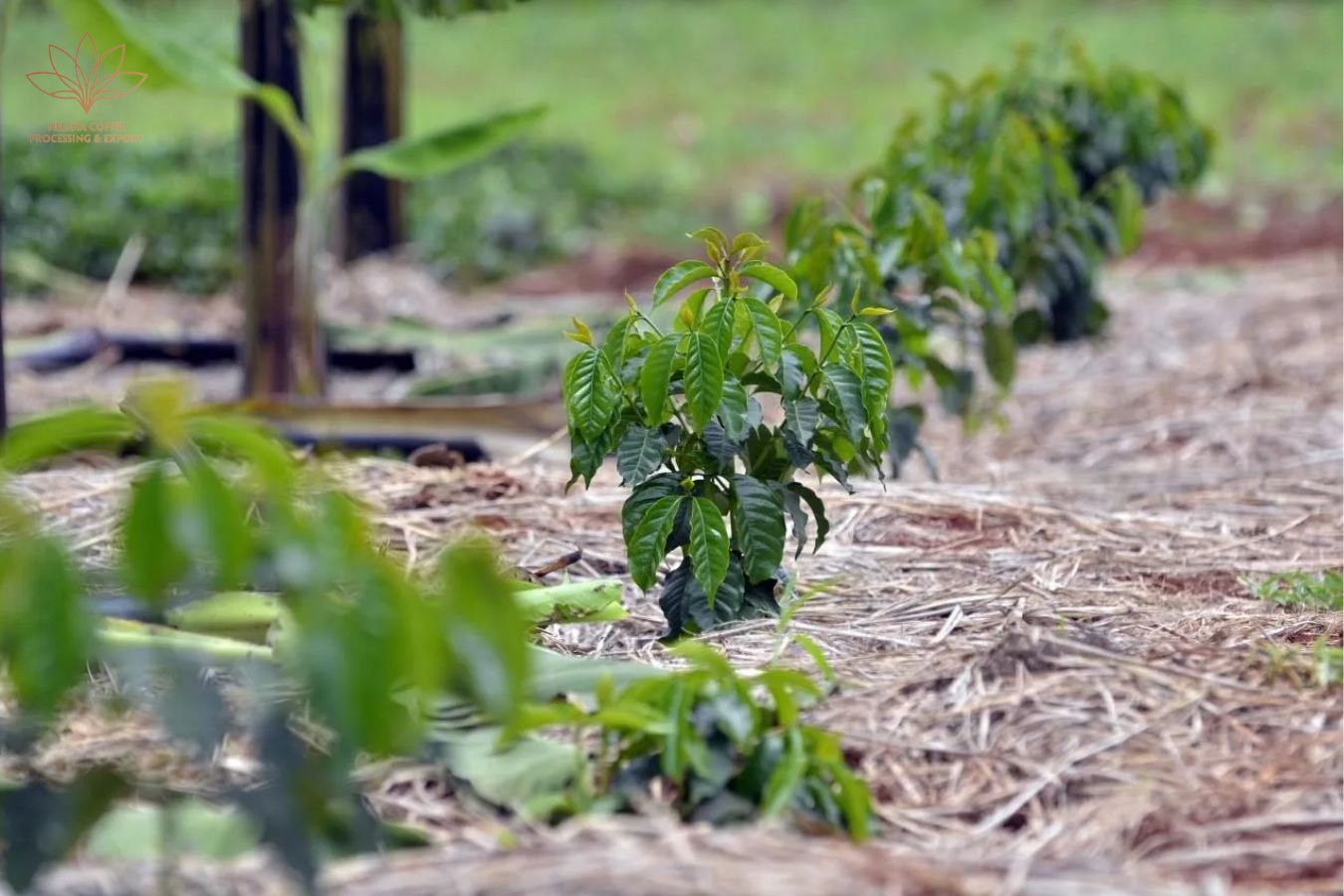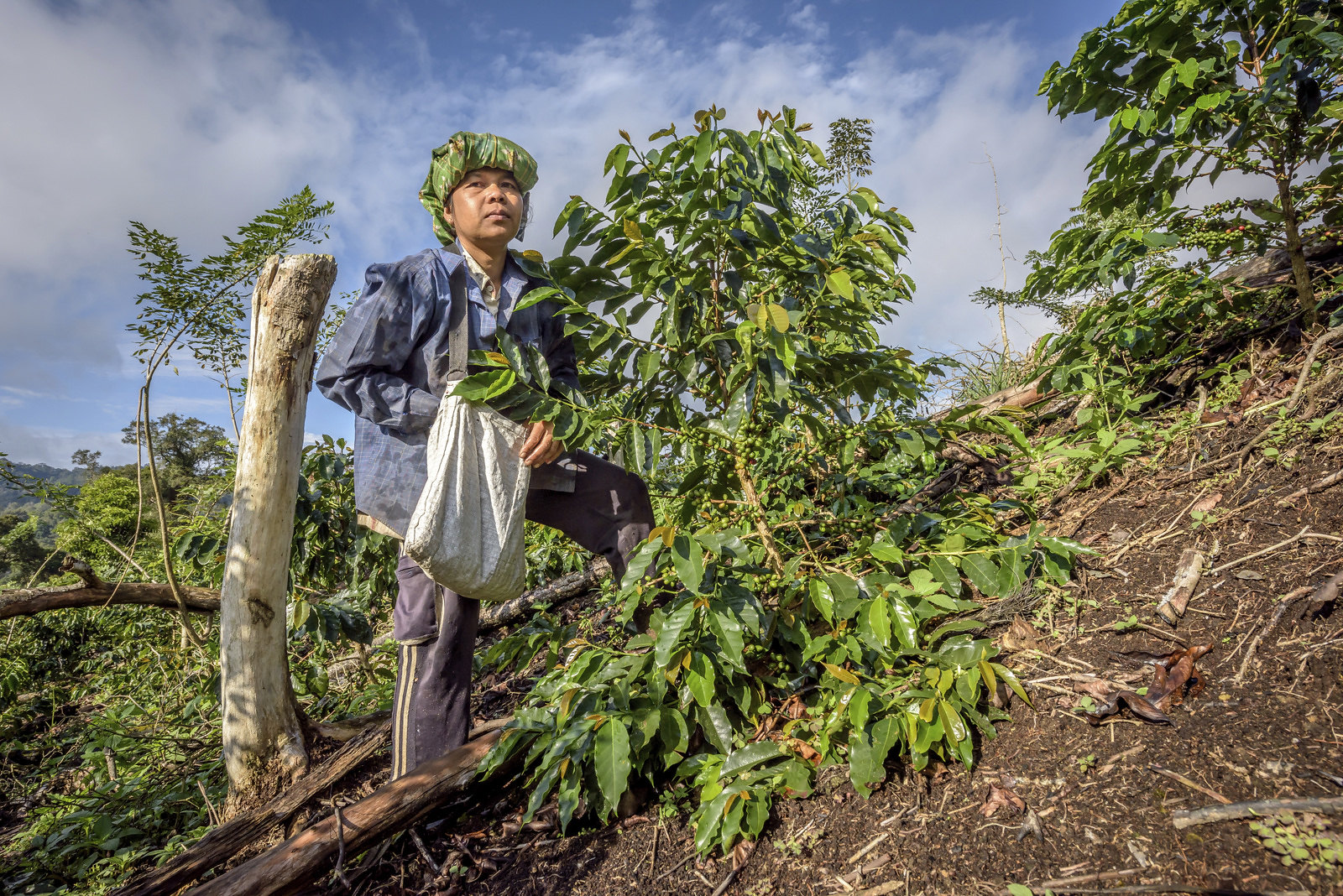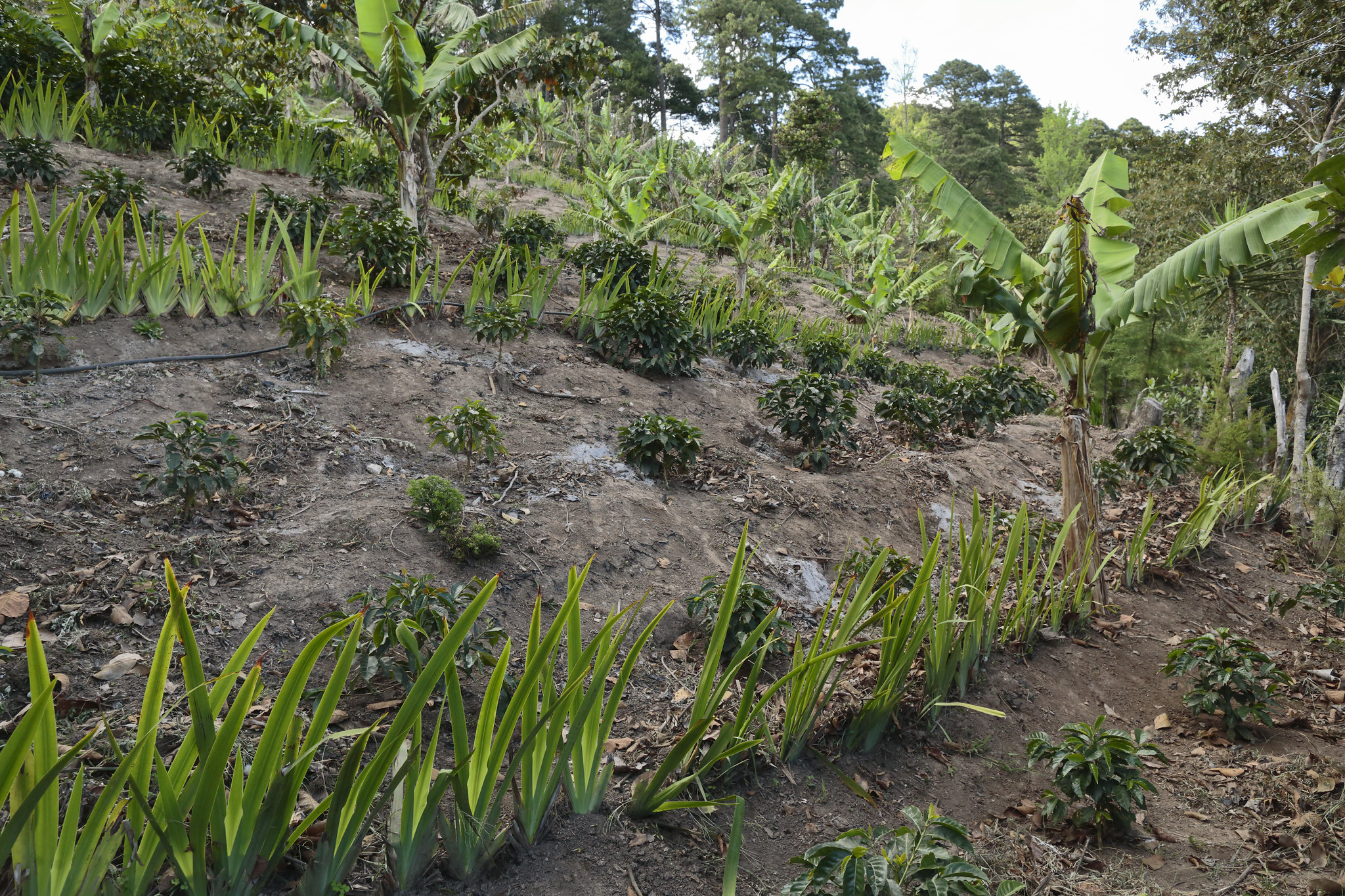
Farming 06: Managing Coffee Land – Whole Farming is a particular column from Helena Coffee Vietnam that provides an overview of what you can and can’t control and how to exercise what controls you can to create a sustainable crop and a good cup of coffee.
Erosion and soil leaching during coffee cultivation cause the deterioration of coffee soil fertility.
Coffee can be grown on soils with different slopes. Still, paying attention to erosion management solutions is necessary, typically in the Central Highlands, Vietnam, with severe and concentrated rain conditions.
The higher the slope, the longer the slope length, the greater the rainfall, the greater the frequency of rain, and the greater the amount of soil loss due to erosion.

Erosion will cause the soil to quickly become discolored, and lose its productive power due to the nutrient content being washed away by the water flow (acidic soil, alkaline cations, alkaline soil is washed away, the soil’s ability to exchange cations is mainly H, Al+3+), the composition of the grain level changes in a wrong direction (the soil structure is broken) leading to limited growth and development of coffee plants, low yield, and not high fertilizer use coefficient, leading to increased investment costs.
The amount of soil erosion on coffee land has a relationship with slope, soil cover. With a slope of 7-8 degrees, annual rainfall in the range of 1520, the total amount of soil erosion can reach 50.2 tons / ha / year; With the same rain, when the slope increases to 10-12 degrees, the amount of soil erosion can reach 113.1 tons / ha / year – Ho Cong Truc, Luong Duc Loan, 1997
Under normal conditions, the essential coffee stage is from 1 to 2 years old, the amount of soil loss due to erosion is from 50 to 60 tons, and the most lost nutrients are organic matter, calcium, total protein, easily digestible potassium, and magnesium.
The loss of these nutrients contributes to the acceleration of soil degradation, significantly increasing the rate of soil acidification, reducing fertilizer use efficiency, and affecting productivity and production costs.
Surface coating
Mechanized techniques designed to maintain soil moisture can be expensive and laborious, such as placing drip irrigation devices. In contrast, mulching straw is much cheaper and more effective for retaining moisture in the soil.
The effect of mulch is simple: it creates a physical barrier that reduces the likelihood of water evaporation in the soil caused by wind and heat from the sun. Mulching has the added benefit of preventing precipitation from compacting the soil.
It is estimated that a raindrop can exert a downward force equivalent to 349 times its own weight, and can create a hole 1cm deep into the weak ground. So, where the ground is not sufficiently covered with foliage, (especially when the plant is very young), a ground cover such as mulch or palm leaves can both prevent the soil from compacting and prevent it from drying out its surface. – BaristaHustle

A study comparing the effects of mulching and drip irrigation found that “both have a significant impact on coffee plant growth and photosynthesis, but the surface coating method is more practical than the drip irrigation method” (K. de Alcantara Notaro et al., 2014).
This is quite true because organic matter can produce coatings at a meager cost. The increase in the photosynthesis rate directly affects coffee plants’ yield.
Plants grown with mulch, irrigation, or nitrogen fertilizers produce more fruit-bearing nodes (MGR Cannell, 1973).
In a coffee farming course for the Food and Agriculture Organization of the United Nations, they advise the following approach to land management (from Covering the bare soil):
If you leave the soil bare, the rain will damage the soil and destroy its structure. Water washes away mineral salts, and the sun decomposes humus very quickly. The soil becomes poorer and does not provide enough nutrition for coffee plants. So the coffee tree will not give much fruit. The surface cover will protect the soil from erosion – you can take advantage of cut vegetation (weeds) or other organic mulch. In this way, the soil is protected from the sun and rain while providing additional organic matter to the soil from the rotting plant part. You can also use cover crops to protect the ground typically such as legumes. Between rows of coffee trees, legumes not only protect the soil, but also provide nitrogen to the soil.
Biological solutions
Hanna Neuschwander, the author of several studies and communications director for World Coffee Research (WCR), mentioned that an important area WCR is exploring is intercropping coffee which covers crops.
By planting crops such as beans and peas interspersed with coffee crops, farmers can obtain a secondary source of income/food source and the benefits of these plants returning nitrogen to the soil (nitrogen fixation).
This farming practice is beneficial in controlling how weeds take away nutrients from the soil. Cover crops on steep grounds effectively with weed control and erosion prevention solutions.

The drawback of cover crops is the need for additional investment (you have to buy seeds), and the economic value is not as high as a commodity. Instead, it is used to regulate the nitrogen balance in the soil and prevent weed growth.
The HRN Stiftung case study in Uganda shows that this method effectively increases moisture in drought-affected soils.
However, their research suggests that this approach is unlikely to be widely implemented until the cost benefits to farmers can be more convincing. The barrier to this problem is the cost of seeds.
In the conditions of the Central Highlands, especially the rainy season, the rainfall is concentrated mainly in 6 months from May to November; the amount of land on the bare eroded coffee gardens is pretty extensive, on average, about 5 tons/ha/year.
Therefore, to limit the risk of soil degradation, it is necessary to have solutions to control soil erosion, contribute to helping coffee plants grow and develop well, and quickly cover the soil surface, thereby having a good effect on limiting soil erosion during cultivation.
Intercropping corn, peanuts, and yellow flowers in coffee gardens is a biological solution that contributes to limiting soil erosion compared to non-intercropping control from 11-60%, in which the resolution of intercropping yellow flowers has the best effect of reducing soil erosion.
Biological solutions combined with mechanics
In Vietnam, for coffee gardens, in addition to biological solutions to manage soil erosion, mechanical or mechanical solutions combined with biology has a perfect effect on controlling soil erosion.
Applying a mechanical solution, such as creating a basin, reduced soil erosion by up to 70% compared to the control. Automated solutions combined with biology (ditching mixed corn and peanuts) reduced soil erosion by about 62%.
However, deciding what kind of barrier is best for coffee land is based on some general principles:
- Conservation or development of existing flora. If the soil is very steep, the trees that have already grown there or the plants you plant new will protect the earth from landslides. Grasses and plants with strong roots will help hold the soil and water, so always take advantage of the available flora.
- It slows down the flow but allows good drainage. It is essential to keep the water moving downhill or into the soil. Poorly designed barriers can lead to water stagnation, allowing mosquitoes to breed and spread malaria and other diseases.
- Fix problems as soon as they occur. Heavy storms can cause ditches to clog ditches or barricades to become avalanches. In these cases, it should be quickly corrected to avoid further erosion.
- Start from the top down. The water flowed downhill. By starting from the top, it is advisable to protect the crop system (coffee) below using many more minor barriers (higher barrier density towards the end of the slope).
Some models of biological barriers incorporate mechanics



References:
- Primecoffea, Canh tác 06: Quản lý đất trồng cà phê, Tháng Một 18, 2023.